Description
Name in North American Boletes: Leccinum carpini
Genus: Leccinellum
- Genus 2: Leccinum
Species: griseum
- Species 2: carpini
- Species 3: pseudoscabrum
Common Name:
Tells: Wrinkled/pitted, dull- to blackish-brown cap adds olive tones & cracks/fissures w/age. White, curved-at-the-bottom stem w/dark scabers. Likes oak.
Other Information: White to gray pores darken w/age & bruise brown. Whitish buff flesh sometimes stains pinkish brown, slowly darkening & gaining bluish-gray tones. Scabers darken with handling, and may be reddish near the base. White mycelium. Leccinum c.f. carpini a/k/a Leccinum pseudoscabrum grows with hornbeam a/k/a ironwood. Both are on this site using the theory that different hosts justify different entries.
Science Notes: There is great confusion in the current nomenclature for North American Leccinums and Leccinellums. This is an example. Once upon a time there was a N.A. mushroom named “Leccinum (now Leccinellum) carpini” after its similarity to the European species of that name. DNA has proved they are not the same; but what is this one? In North American Boletes the range for “carpini” was set at Canada south to Florida, west to Michigan. In Boletes of Eastern North America the range for this mushroom is limited to the South, Leccinellum quercophilum (new) is limited to the north, and Leccinellum crocipodium, and Leccinum rugosiceps being the wrinkled-cap scaber-stalks with broad ranges. Who knows where it will end!
Edibility: Unknown, but in its former life as “Leccinum carpini” it was considered a good edible based on the European mushroom of that name.
CHEMICAL TESTS:
- NH4OH (Ammonia): Cap skin turns brown. Flesh turns very pale yellow, becoming fuscous (brownish gray/black, maybe with some purple tones).
- KOH: Cap skin turns dark red brown. Flesh turns light brown.
- FeSO4 (Iron Salts): Cap skin has no reaction. Flesh turns greenish blue.
Links:
- Mushroom Expert (as Leccinum pseudoscabrum)
- Mushroom Observer
- Wikipedia
- Google Image Search
 |
0 |  |
0 |  |
200 |  |
242 |

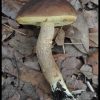
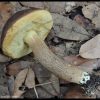
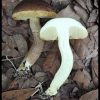
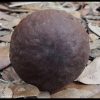
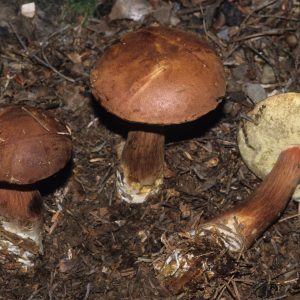
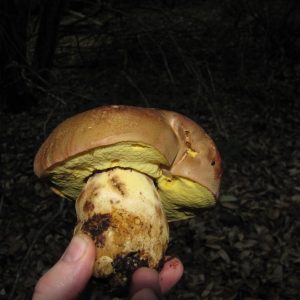
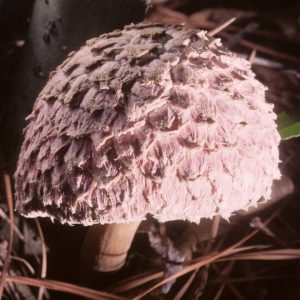

Got something to discuss?